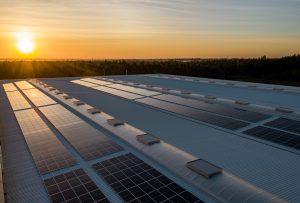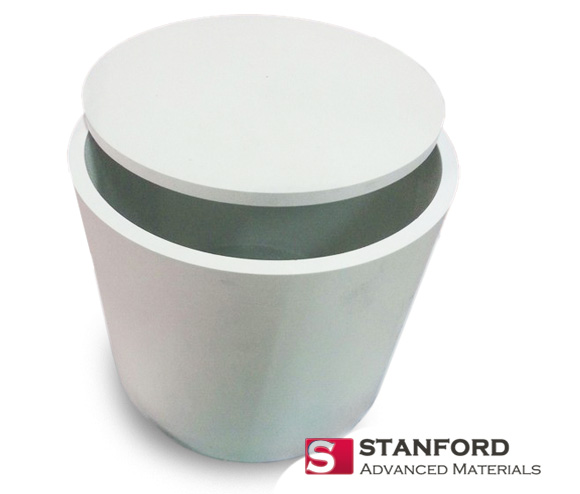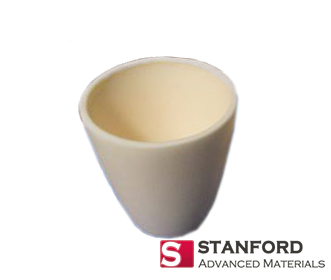Introduction
Selecting the appropriate crucible for material evaporation processes is a critical decision that significantly impacts the success and efficiency of thin film deposition techniques. The melting temperature of the evaporation material plays a pivotal role in this selection process, as it directly influences the thermal and chemical compatibility between the crucible and the material. An optimal match ensures high-quality film formation, minimizes contamination, and enhances the overall stability of the evaporation process. Understanding the interplay between crucible materials and evaporation substances is essential for achieving desired outcomes in various applications, from semiconductor manufacturing to the creation of optical coatings.
Here is a QUICK GUIDE for this article:
- What are Evaporation Materials?
- Common Crucible Materials Used for Evaporation
- Importance of Melting Temperature
- Matching Evaporation Materials to Crucibles
- Case Studies/Examples
- Maintenance and Handling Tips for Crucibles
What are Evaporation Materials?
Evaporation materials encompass a wide range of metals, alloys, and compounds, each selected for their specific properties and the desired characteristics they impart to the final thin film. Common metals used include aluminum, gold, silver, and copper, known for their conductivity and reflective properties. Alloys, mixtures of metals, offer tailored electrical, thermal, or mechanical properties, expanding the versatility of evaporation techniques in creating complex films. Additionally, compounds such as oxides, nitrides, and sulfides are employed to introduce specific optical, electronic, or chemical functionalities into the films.
The choice of evaporation material is dictated by the application’s requirements, whether enhancing a device’s electrical performance, improving corrosion resistance, or modifying optical properties. Each material presents unique handling and evaporation characteristics, necessitating careful selection of the corresponding crucible material to ensure process efficacy and material integrity.
Common Crucible Materials Used for Evaporation
Crucibles used in material evaporation must withstand high temperatures and aggressive chemical environments while minimizing contamination. The choice of crucible material is largely determined by the evaporation material’s thermal properties and the evaporation process’s specific requirements. Common crucible materials include the following types.
Boron Nitride Crucibles: Boron nitride crucibles offer exceptional thermal shock resistance and a non-wetting surface that reduces material adhesion, simplifying the evaporation of challenging materials. Their chemical inertness makes them compatible with a wide range of substances, particularly useful for high-purity evaporation tasks.
Alumina Crucibles: Alumina crucibles stand out for their resistance to high temperatures and chemical inertness, making them suitable for evaporating metals and complex compounds. Their durability and affordability also make alumina crucibles a popular choice in many standard evaporation processes.
Graphite Crucibles: Known for their ability to withstand extremely high temperatures, graphite crucibles are preferred for the evaporation of materials with high melting points. Graphite’s excellent thermal conductivity ensures uniform heat distribution, though reactivity with certain metals at elevated temperatures may need consideration.
Molybdenum Crucibles: Molybdenum crucibles are chosen for their high melting point and strength, making them ideal for high-temperature applications. Their resistance to thermal shock and low vapor pressure at elevated temperatures ensure stability and longevity in demanding evaporation scenarios.
Niobium Crucibles: Niobium crucibles offer remarkable resistance to chemical attack and maintain their integrity under high temperatures, suitable for corrosive materials and environments where maintaining purity is critical.
Importance of Melting Temperature in Crucible Selection
The melting temperature of evaporation materials plays a paramount role in crucible selection, dictating the compatibility between the crucible and the material to ensure a successful evaporation process. This significance stems from the need for thermal stability and the avoidance of chemical reactivity during evaporation, factors that are directly influenced by the material’s melting temperature.
Thermal Stability: Crucibles must maintain structural integrity and performance at temperatures exceeding the melting point of the evaporation material. If a crucible material is chosen without considering the evaporation material’s melting temperature, the crucible may degrade or melt, contaminating the material and compromising the deposition quality. For instance, materials with a high melting temperature require crucibles like graphite or boron nitride, known for their ability to withstand extreme heat.
Chemical Reactivity: The interaction between the crucible material and the evaporation material at high temperatures can significantly affect the purity of the deposited film. Certain materials may react with crucible constituents at or near their melting points, leading to undesirable contamination. It is, therefore, crucial to select a crucible material that remains chemically inert relative to the evaporation material throughout the evaporation process.
A thorough understanding of the melting temperature aids in predicting the evaporation behavior, including the rate of evaporation and the stability of the evaporated material. By matching the crucible material to the evaporation material’s thermal and chemical requirements, one can achieve a high degree of control over the deposition process, optimizing the quality and performance of the final product.
Table 2. Evaporation Materials & Their Recommended Crucibles
| Evaporation Material | Recommended Crucible(s) | Notes |
|---|---|---|
| Metals and Alloys (Al, Ag, Au, Cu) | Ceramic, Quartz, Graphite | Prevent contamination, ensure high purity. Graphite for high thermal conductivity. |
| Compounds (SiO2, TiO2, ZnS) | Quartz, Boron Nitride | Chemical inertness, high-temperature resistance. |
| High Melting Point Materials (W, Mo, Pt) | Graphite, Boron Nitride | Withstand very high temperatures, thermal shock resistance. |
| Semiconductors and Dielectrics (Si, Ge, GaAs) | Quartz, Specialized Ceramics | Low contamination risk, maintain semiconducting properties. |
| Organic Materials (Organic semiconductors, Dyes) | Quartz, Ceramic | Clean, inert environments to prevent degradation. |
Other Considerations
- Thermal Conductivity: Crucibles with high thermal conductivity, like graphite, are beneficial for uniform heating and efficient evaporation.
- Chemical Inertia: To prevent contamination, the crucible material must not react with the evaporation material at the operating temperatures.
- Thermal Expansion: Compatibility in thermal expansion coefficients between the crucible and the evaporation material minimizes stress and potential damage during thermal cycles.
Matching Evaporation Materials to Crucibles
Selecting the right crucible for a given evaporation material involves understanding both the material’s properties and the crucible’s capabilities. The melting temperature, chemical reactivity, and specific application of the evaporation material play significant roles in this decision-making process. Here’s a guide on matching common evaporation materials with suitable crucibles, informed by their compatibility:
Metals and Alloys:
Aluminum, Silver, Gold, and Copper: These metals are commonly evaporated materials due to their electrical and thermal properties. Ceramic or quartz crucibles are often used for these metals to prevent contamination and ensure high purity in the deposition process. Graphite crucibles can also be selected for their high thermal conductivity when evaporation temperatures are within acceptable ranges to avoid reactions.
Compounds (Oxides, Nitrides, Sulfides):
Silicon Dioxide (SiO2), Titanium Dioxide (TiO2), Zinc Sulfide (ZnS): Quartz crucibles are preferred for oxide and sulfide compounds due to their chemical inertness and ability to withstand high temperatures without reacting with the evaporation material. Boron nitride crucibles might also be considered for their non-reactive nature and thermal stability.
High Melting Point Materials:
Tungsten, Molybdenum, and Platinum: Graphite and boron nitride crucibles are suitable for these materials because of their ability to withstand very high temperatures. Their high thermal shock resistance is crucial for materials that require rapid heating and cooling cycles.
Semiconductors and Dielectrics:
Silicon (Si), Germanium (Ge), Gallium Arsenide (GaAs): For semiconductors and dielectric materials, crucibles made of quartz or specialized ceramics that offer low contamination risk are ideal. These materials need carefully controlled environments to maintain their semiconducting properties.
Organic Materials:
Organic semiconductors, Dyes: Organic materials are generally evaporated at lower temperatures. Quartz and ceramic crucibles are preferred for their clean, inert environments, which are necessary to prevent degradation of the organic compounds.
Here is a full list of Recommended Crucibles for Evaporation Materials for your reference.
Case Studies/Examples
To illustrate the critical nature of matching evaporation materials with the appropriate crucibles, let’s explore a few real-world case studies:
Case Study 1: High-Brightness LEDs
- Material: Gallium Arsenide (GaAs)
- Crucible: Graphite
- The Case: In the production of high-brightness LEDs, GaAs is a preferred evaporation material due to its excellent semiconductor properties. The use of graphite crucibles, known for their high thermal conductivity and resistance to thermal shock, ensures uniform heating and minimal contamination. This combination results in LEDs with superior brightness and longevity. Read more >>

Case Study 2: Aerospace Electronics
- Material: Aluminum (Al)
- Crucible: Boron Nitride (BN)
- The Case: Aerospace applications demand electronics that can withstand extreme conditions. Aluminum, used for its conductive properties, when evaporated in boron nitride crucibles, which offer excellent thermal stability and low reactivity, ensures the production of coatings that significantly enhance the thermal and electrical performance of aerospace components. Read more >>
Case Study 3: Renewable Energy – Photovoltaic Cells
- Material: Cadmium Telluride (CdTe)
- Crucible: Quartz
- The Case: For photovoltaic cells, CdTe is a critical material due to its optimal bandgap for solar absorption. Quartz crucibles are chosen for their purity and high melting point, facilitating the deposition of high-quality, efficient photovoltaic films. This match is pivotal for achieving the high efficiency required in renewable energy applications. Read more >>

Case Study 4: High-Temperature Sensors
- Material: Silicon Carbide (SiC)
- Crucible: Tantalum (Ta)
- The Case: SiC is essential for high-temperature sensors due to its robust thermal properties. Tantalum crucibles, capable of withstanding the high evaporation temperatures of SiC without contaminating it, are crucial for fabricating sensors that maintain accuracy and reliability under extreme conditions. Read more >>
Table 3. Case Studies for Evaporation Materials & Crucibles
| Case Study | Material | Crucible | Context |
|---|---|---|---|
| High-Brightness LEDs | Gallium Arsenide (GaAs) | Graphite | Preferred for high-brightness LEDs production due to its semiconductor properties and the graphite crucible’s thermal conductivity. |
| Aerospace Electronics | Aluminum (Al) | Boron Nitride (BN) | Used in aerospace for its conductive properties and the BN crucible’s thermal stability. |
| Renewable Energy – Photovoltaic Cells | Cadmium Telluride (CdTe) | Quartz | Critical for photovoltaic cells due to its optimal bandgap, with quartz crucibles ensuring purity and high-quality film deposition. |
| High-Temperature Sensors | Silicon Carbide (SiC) | Tantalum (Ta) | Essential for high-temperature sensors, with tantalum crucibles providing durability under extreme conditions. |
These case studies underscore the importance of selecting the right crucible material based on the evaporation material’s properties and the intended application. The correct crucible-material match not only enhances the quality of the thin films produced but also extends the life of the crucibles and ensures the efficiency of the evaporation process.
Maintenance and Handling Tips for Crucibles
Proper maintenance and handling of crucibles are essential for prolonging their lifespan and ensuring the consistency and quality of the evaporation process. Here are some crucial tips to consider:
- Thermal Cycling: Gradually heat and cool crucibles to prevent thermal shock, which can lead to cracks or other damages. Abrupt changes in temperature can significantly reduce a crucible’s durability.
- Cleaning: After each use, crucibles should be carefully cleaned to remove any residual material. This prevents cross-contamination between different evaporation sessions. For materials that are difficult to remove, consider using appropriate solvents or a mild abrasive, ensuring not to damage the crucible surface.
- Storage: Store crucibles in a clean, dry environment to prevent contamination from dust or other particles. Proper storage also minimizes the risk of accidental damage.
- Handling: Use appropriate tools and protective equipment when handling hot crucibles. Even when cool, handle crucibles with care to avoid chips or cracks that could affect their performance.
- Inspection: Regularly inspect crucibles for signs of wear, such as thinning, cracking, or erosion. Early detection of these issues can prevent failure during the evaporation process.
- Reuse and Recycling: Some crucible materials can be reused for the same evaporation material. However, assess the condition of the crucible before reuse to ensure it remains suitable. Recycling or proper disposal of crucibles should be considered when they are no longer usable.
By adhering to these maintenance and handling tips, users can significantly extend the operational life of their crucibles, ensure the purity of their evaporation materials, and maintain the efficiency of their deposition processes.
Conclusion
The careful selection of crucibles for evaporation materials, based on factors such as melting temperature and material compatibility, is crucial for achieving optimal deposition results. This guide has outlined the importance of understanding the properties of both evaporation materials and crucible materials, providing insights into how these selections impact the quality and efficiency of the evaporation process. From high-power electronics to aerospace and renewable energy applications, the right crucible-material match enhances performance, extends crucible life, and ensures the success of the evaporation process. Always consider the melting temperature, chemical reactivity, and specific application needs when selecting a crucible, and utilize resources like Stanford Advanced Materials (SAM) for high-quality crucibles suited to your materials science needs.
Click to Inquiry High Quality Crucibles for E-beam Evaporation










